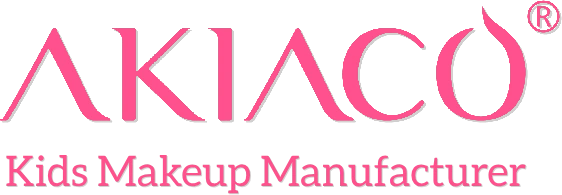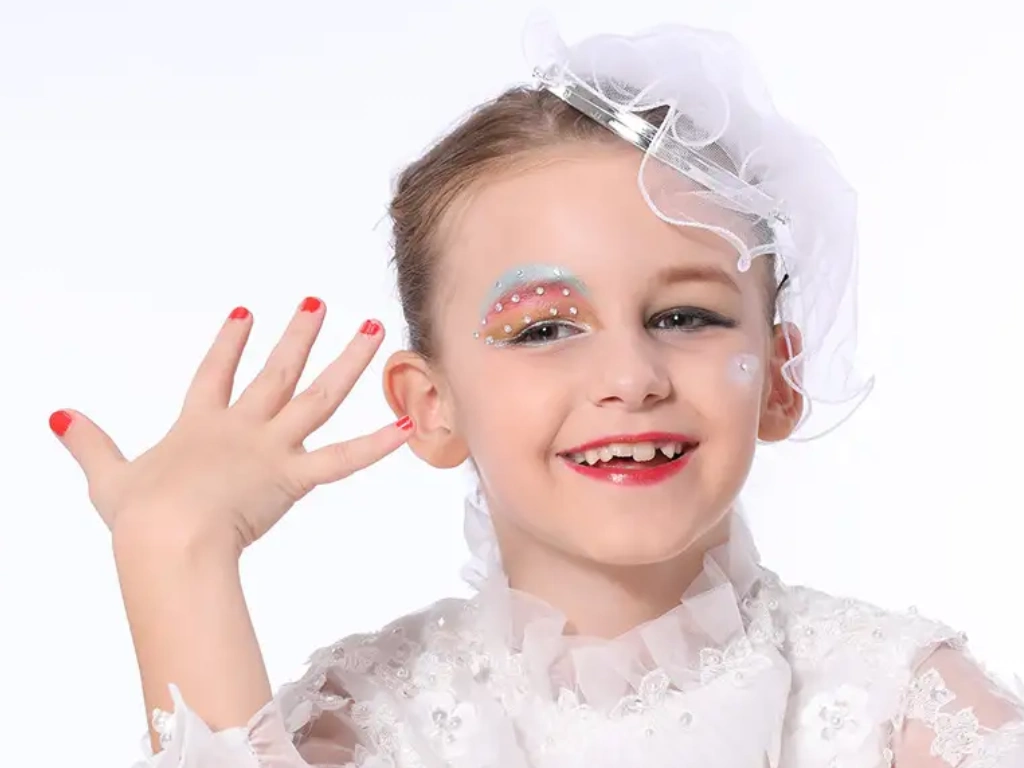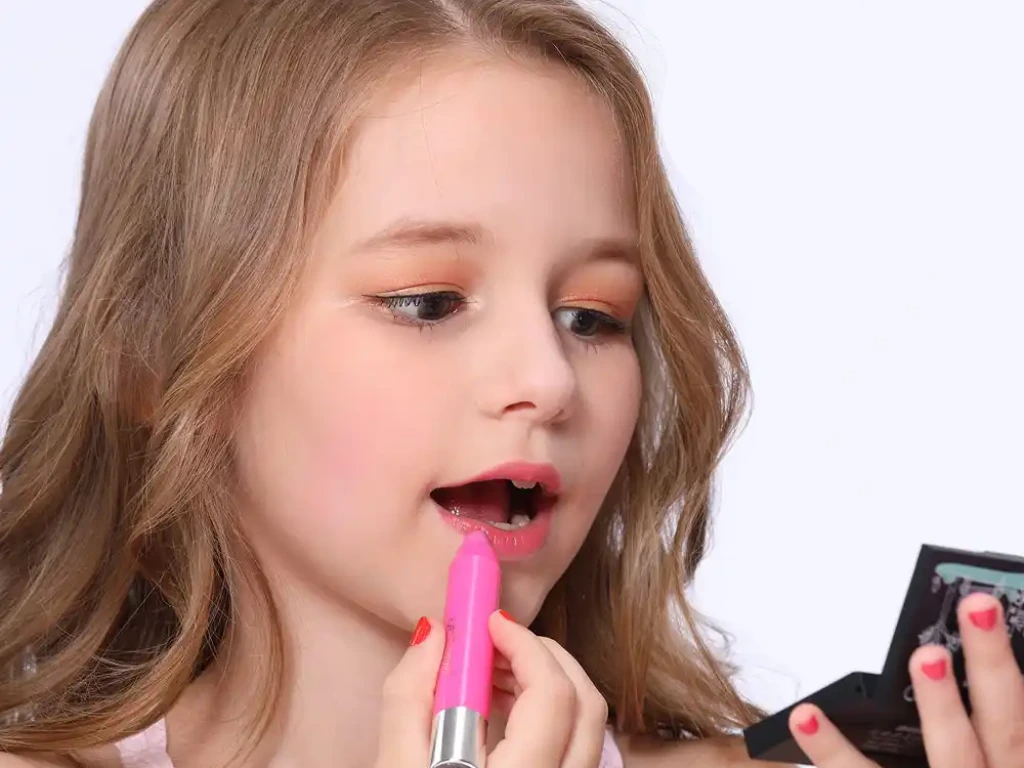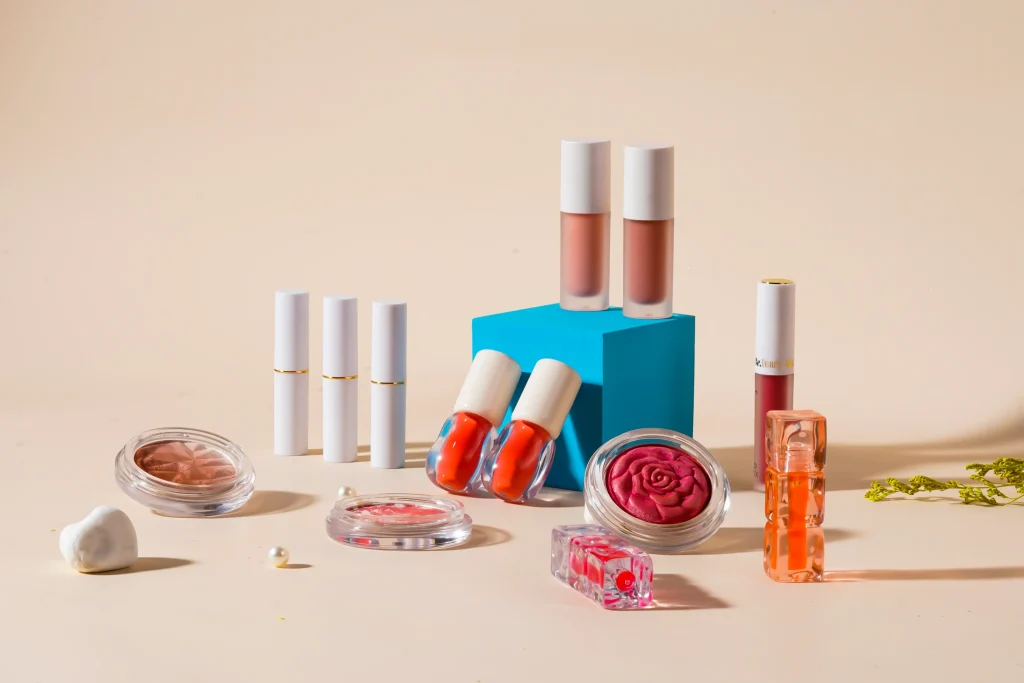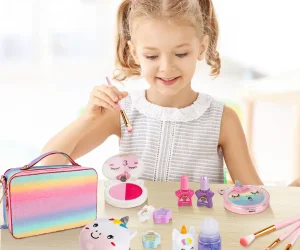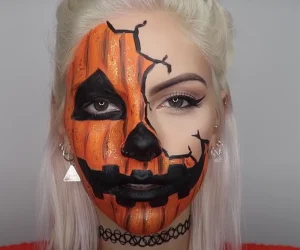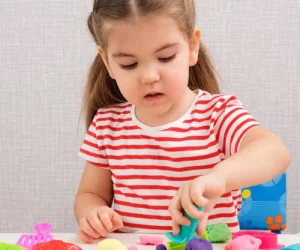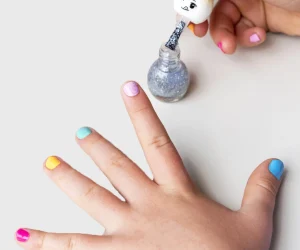What’s the Difference Between Adult and Kid Makeup?
Table of Contents
Makeup is not the same for every age. Adult makeup is created for fashion and long wear, while kids makeup is designed mainly for play and safe exploration. Understanding this gap is important when looking at safety, purpose, and design.
Purpose and Function of Adult vs. Kid Makeup
The role of makeup shifts with age. Adult makeup serves as a tool for beauty, work, and fashion, while kids makeup is crafted mainly for play, safe learning, and early creative experiments.
Adult Makeup for Enhancement and Fashion
Adult makeup is built to change or highlight features. Lipsticks, foundations, and mascaras are often made with long-lasting pigments. These products are created for daily wear, special events, or professional settings where appearance plays a role.
A college student, for example, may use eyeliner before an interview. The product is not about fun but about presenting a polished face. Such cosmetics often contain ingredients tested for adult skin, which is less sensitive than that of children.
Adult formulas may also include elements like silicones or waterproof agents. These help the product stay through hours of wear. However, these same agents can be difficult to remove, which makes them unsuitable for kids makeup.
Kid Makeup for Play, Learning, and Creativity
Kid makeup is designed very differently. Its main purpose is safe play. Children explore colors like they do crayons or paints. The formulas are often water-based or mineral-based and meant to wash off easily with mild soap.
From a learning view, kids makeup can support motor skills and color recognition. Studies on play-based learning note that role-play activities improve social skills in early childhood (Bodrova & Leong, Tools of the Mind, 2007). Unlike adult cosmetics, the goal here is experience, not enhancement.
Ingredient Differences Between Adult and Kid Makeup
The biggest gap between adult makeup and kids makeup lies in the formula. Adult products are designed for performance and style, while children’s products focus on safety, gentleness, and easy removal.
Common Ingredients in Adult Formulas
Adult makeup often includes strong pigments, preservatives, and texture enhancers. These help lipsticks last longer, mascaras resist smudging, or foundations blend smoothly. For example, silicones are used to create a polished finish, while parabens may act as preservatives.
Adults can handle these ingredients because their skin barrier is more developed. But on younger skin, such chemicals may cause irritation. Fragrance additives, though popular in luxury brands, are another example. They give products a signature scent but are one of the most common sources of allergic reactions.
Another point is that adult makeup may contain oils or waxes for shine. While safe for grown-ups in controlled amounts, these can be heavy for children’s thinner skin. This shows why kids makeup avoids such concentrated formulations.
Safer and Gentler Ingredients in Kid Makeup
Kid makeup takes the opposite route. Instead of long-lasting pigments, many toy kits use food-grade dyes or natural colorants. These provide bright colors but wash away easily. The formulas are usually water-based, keeping removal simple with soap and water.
Manufacturers also choose materials with lower risk of irritation. For example, mineral powders or plant-derived binders replace harsh synthetics. Many toy sets avoid strong fragrances altogether, or they use very mild scents to reduce allergic risks.
Safety Standards and Regulations in Adult vs. Kid Makeup
Makeup for adults and kids may look similar on the surface, but the rules behind them are not the same. Adult cosmetics are judged as personal care products, while kids makeup is often regulated as toys, with stricter safety checks for young users.
Adult Cosmetics Safety Testing
Adult makeup goes through tests set by agencies such as the U.S. Food and Drug Administration (FDA) or the European Commission. These tests often look at skin irritation, stability, and labeling accuracy. For example, pigments must be on approved lists before being sold.
Companies may also run patch tests or clinical studies to show that a new blush or lipstick won’t cause harm in normal use. However, adult makeup usually assumes the user understands directions, like keeping eyeliner away from the eye itself. The burden of safe use is partly on the consumer.
Adult products may also allow a wider range of preservatives or colorants since adult skin is more resilient. This flexibility helps create long-lasting formulas but also means stricter labeling is needed so buyers can make informed choices.
Toy Safety Standards for Kid Makeup
Kids makeup is different. In many regions, it falls under toy safety rules such as ASTM F963 in the U.S. or EN71 in Europe. These require tests for choking hazards, heavy metals, and even flammability. The goal is to protect children, who may not follow directions as carefully.
For example, if a child decides to taste the lip gloss, the formula must be non-toxic. Labels often include age recommendations and warnings. Packaging itself is tested too, making sure lids and small parts won’t break off easily.
Because play is unpredictable, regulators expect kid makeup to handle rougher treatment. A powder compact designed for adults might not survive being dropped from a child’s hand, but a toy compact must pass drop tests before hitting store shelves.
Texture, Pigmentation, and Performance Differences
The look and feel of adult makeup is built for durability, while kids makeup is designed for easy play and quick removal. These differences are most visible in texture, color strength, and how the products behave on skin.
Strong Pigmentation in Adult Makeup
Adult makeup often carries bold pigments. A single swipe of lipstick or eyeshadow may last for hours, even resisting sweat or oil. This strength comes from concentrated colorants and binders that lock the shade into place.
Such intensity allows adults to create dramatic styles. A bright red lip or smoky eye depends on pigments that stay vibrant under light or through long events. Yet this performance makes removal more involved, usually needing cleansers or oils.
An example: a stage performer may rely on highly pigmented blush to stay visible under spotlights. While perfect for adults, such formulas would overwhelm children’s delicate skin and prove difficult to wash off after play.
Softer Textures and Washable Formulas in Kid Makeup
Kids makeup flips the script. The textures are often creamy or powdery, with low pigment levels. A swipe of pink eyeshadow may appear faint, leaving just a hint of color. This way, children can explore without harsh stains on skin.
Most kids makeup is water-based. A little soap and warm water usually removes it fully. This quick wash-off feature prevents the need for makeup removers that might sting sensitive skin. Parents can wipe faces clean in minutes.
Imagine a child applying glittery nail color from a toy kit. Instead of lasting for days like salon polish, the coating may peel or rinse off within hours. The goal is fun and safe exploration, not endurance.
Packaging and Design: Adult vs. Kid Makeup
Packaging tells a story before the product is even opened. Adult cosmetics focus on function and elegance, while kids makeup leans toward color, fun, and safety-first construction.
Functional and Stylish Packaging for Adults
Adult makeup packaging often serves two goals: protect the formula and look sophisticated. Lipsticks may come in metal tubes that snap shut tightly to preserve freshness. Foundations might use pumps to control dosage and reduce waste.
Design is also a key factor. Sleek black palettes or glass jars signal luxury. Some brands use magnetic closures, mirrors, or applicators built into the case for added convenience. The packaging reflects fashion as much as function.
Adults also expect portability. A compact powder designed for handbags must resist breaking if dropped. This balance of durability and style shows how packaging supports adult lifestyles.
Bright, Fun, and Playful Packaging for Kids
Kids makeup packaging works differently. Safety comes first, so containers are often lightweight plastic with rounded edges. Lids are made easier to open, but still secure enough to avoid spills in backpacks.
Colors and designs target imagination. Palettes shaped like hearts, stars, or animals turn makeup into a toy. Glittery stickers or cartoon prints invite children to see the product as part of playtime.
A practical example: a kid-friendly lip gloss tube might be oversized so small hands can grip it, while also using thicker walls to prevent accidental breaks. This shows how playful design is paired with real safety concerns.
Psychological and Developmental Considerations
Makeup interacts with more than just skin. For adults, it supports identity and social presentation. For children, it is part of imagination, role-play, and learning about self-expression in a safe context.
Makeup as Self-Expression for Adults
Adults often use makeup to communicate mood, style, or confidence. Lipstick, eyeshadow, or contouring can emphasize features or create a polished look for work or social settings.
Studies in psychology note that makeup can influence self-perception and social perception (Cash et al., Body Image, 2004). The process itself—choosing colors, blending, and highlighting—helps adults feel in control of their appearance.
Adults also experiment with trends, textures, and techniques. A bold eyeliner or dark lip can be an artistic statement, while maintaining durability and precision is key for daily routines.
Makeup as Role-Play and Imagination for Kids
For children, makeup is largely a tool for imaginative play. Kids makeup kits let them experiment with colors, pretend roles, and storytelling, much like dress-up or art activities.
Using safe, washable products, children can mimic adults or create fantastical characters. This type of play supports creativity, social skills, and early understanding of aesthetics, without the pressure of achieving “perfect” looks.
A child may apply blush or glitter while pretending to be on stage or a superhero. The focus is experience and exploration, not appearance. This developmental use is central to why kids makeup is formulated differently from adult products.
Age-Appropriate Usage Guidelines for Kid Makeup
Children are naturally curious, but safe limits help prevent misuse. Age-appropriate guidelines ensure that kids makeup remains a fun, educational, and harmless experience.
When Kids Can Safely Use Makeup Toys
Most experts recommend introducing makeup toys around ages 3 to 5, depending on the child’s maturity and fine motor skills. Products should be non-toxic, water-based, and designed specifically for children.
At this age, children can experiment with colors, shapes, and textures under supervision. A simple palette or lip balm allows them to explore safely. Parents or educators can guide usage, making sure the play remains a learning experience rather than a cosmetic application expectation.
Setting Boundaries and Healthy Habits
Even with safe products, boundaries are essential. Encourage kids to wash off makeup after play and to avoid sharing items that touch the lips or eyes. This reduces risks of irritation or minor infections.
Healthy habits also involve framing makeup as play rather than appearance-focused. Discussing safety, cleanup, and respect for others’ space helps children enjoy kids makeup while learning responsibility and personal hygiene.
Cultural and Social Views on Adult and Kid Makeup
Makeup is more than products on skin; it carries cultural and social meaning. Societies interpret adult and kid makeup differently, reflecting norms, expectations, and debates about age-appropriate behavior.
How Societies Perceive Adult Makeup
Adult makeup is often associated with professionalism, fashion, or personal expression. In many cultures, a polished face signals confidence or social readiness.
Some societies embrace bold colors and experimental styles, while others favor subtle, natural looks. Social perception can influence product choices, such as long-wear foundation for work or evening events. Makeup thus becomes a tool for communication beyond aesthetics.
Debates Around Children Using Makeup for Play
Children using makeup sparks discussions about appropriateness and early exposure to beauty standards. Some parents worry about promoting appearance-focused behavior too early, while others emphasize creativity and role-play.
Educational experts often highlight that supervised play with safe kids makeup can support imagination without reinforcing adult beauty pressures. Debates usually center on context, supervision, and the type of products used, rather than the act of play itself.
Common Misconceptions About Kid Makeup vs. Adult Makeup
Many people assume that kids makeup is simply smaller versions of adult products. In reality, formulations, purpose, and safety standards are designed specifically for young users, making them fundamentally different.
“Kid Makeup is Just Mini Adult Makeup” Myth
It’s a common belief that kid makeup is just adult lipstick or eyeshadow in smaller packaging. The truth is, kids makeup uses non-toxic, water-based formulas with low pigmentation and gentle ingredients.
These products are crafted for play, creativity, and easy removal. Unlike adult makeup, which is tested for performance and long wear, kids makeup prioritizes safety and developmental appropriateness. Using adult makeup on children can risk irritation or accidental ingestion.
Concerns About Early Exposure to Beauty Standards
Another misconception is that allowing kids to use makeup immediately instills unrealistic beauty ideals. Experts argue that supervised play with safe kids makeup focuses on creativity and imagination rather than appearance.
Studies in child development suggest that role-play activities, including using cosmetic toys, enhance social skills and motor coordination (Bodrova & Leong, Tools of the Mind, 2007). The key is context: play should emphasize fun and learning, not conformity to adult beauty standards.
Conclusion
Understanding the difference between adult and kid makeup is key. Adult products focus on performance and style, while kids makeup prioritizes safety, gentle ingredients, and imaginative play. Clear boundaries ensure fun, creativity, and responsible use.
FAQ
Yes. Most kids makeup is formulated with non-toxic, hypoallergenic ingredients. Water-based and fragrance-free options reduce irritation risks. Parents should still test a small area first to ensure compatibility.
Yes. Lightweight, water-based products are usually safe for ages 3–5 and up. Glitter, lip gloss, or eye color may have higher recommended ages due to small parts or stronger pigments. Labels should always be followed.
Absolutely. Kids makeup encourages creativity. Children can layer, blend, or combine colors safely. The low pigment and washable formulas allow experimentation without the permanence or risks of adult cosmetics.
Most kids makeup is water-soluble. Warm water and mild soap remove it completely from skin. Avoid harsh cleansers or scrubbing, as these can irritate sensitive skin. Clean brushes and applicators regularly to prevent bacteria buildup.
It is not recommended. Adult makeup may contain strong pigments, preservatives, or fragrances unsuitable for children. Even brief exposure can cause irritation. Always choose products specifically designed for kids.
